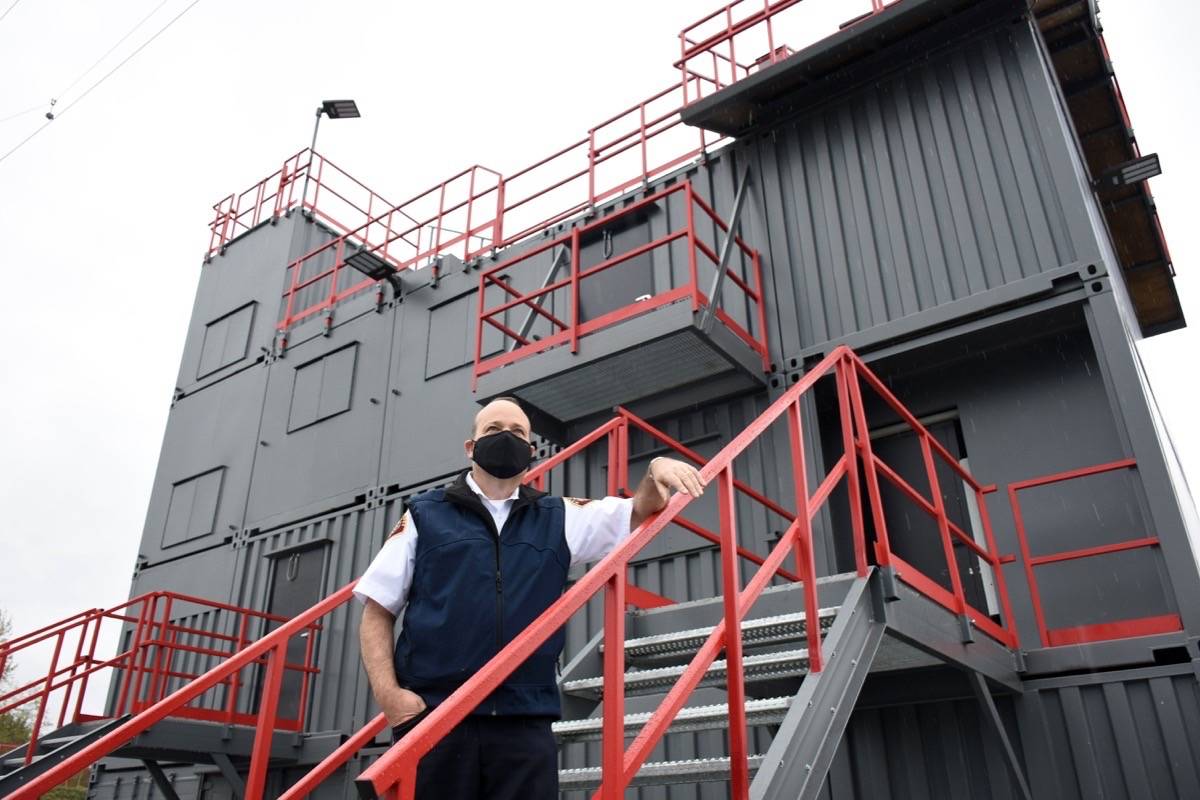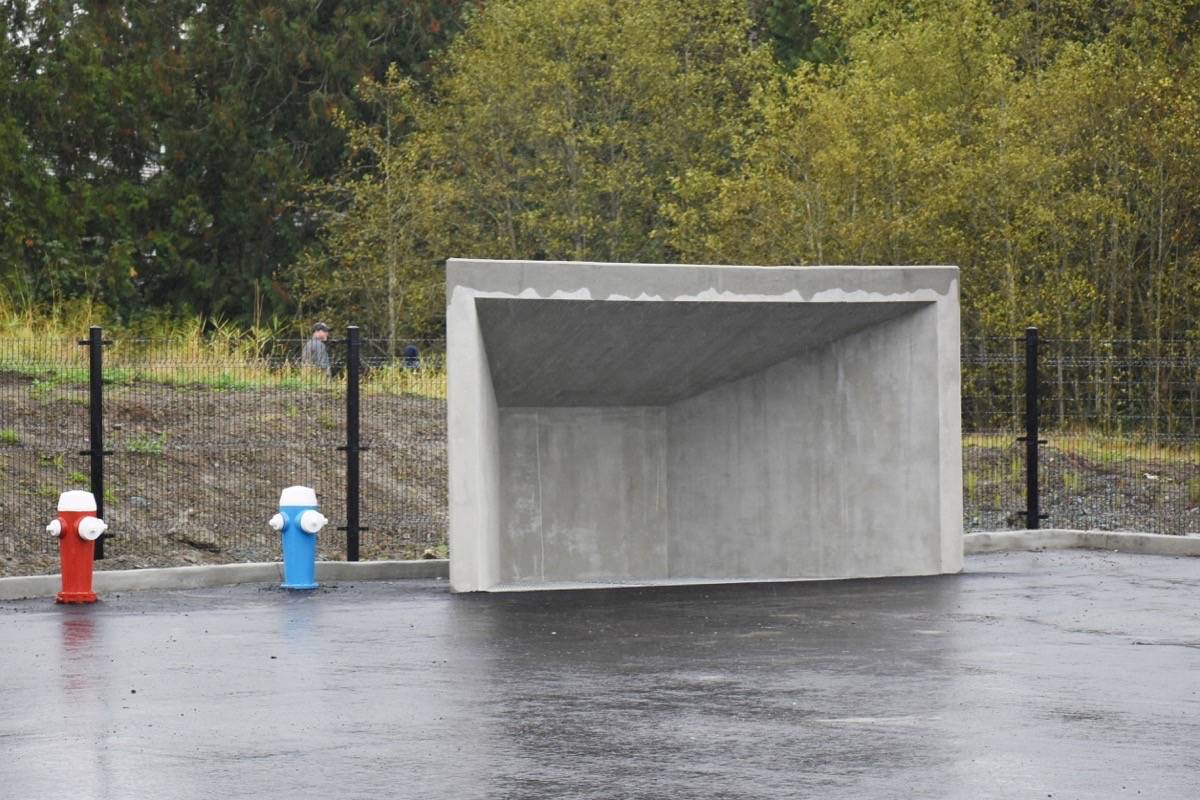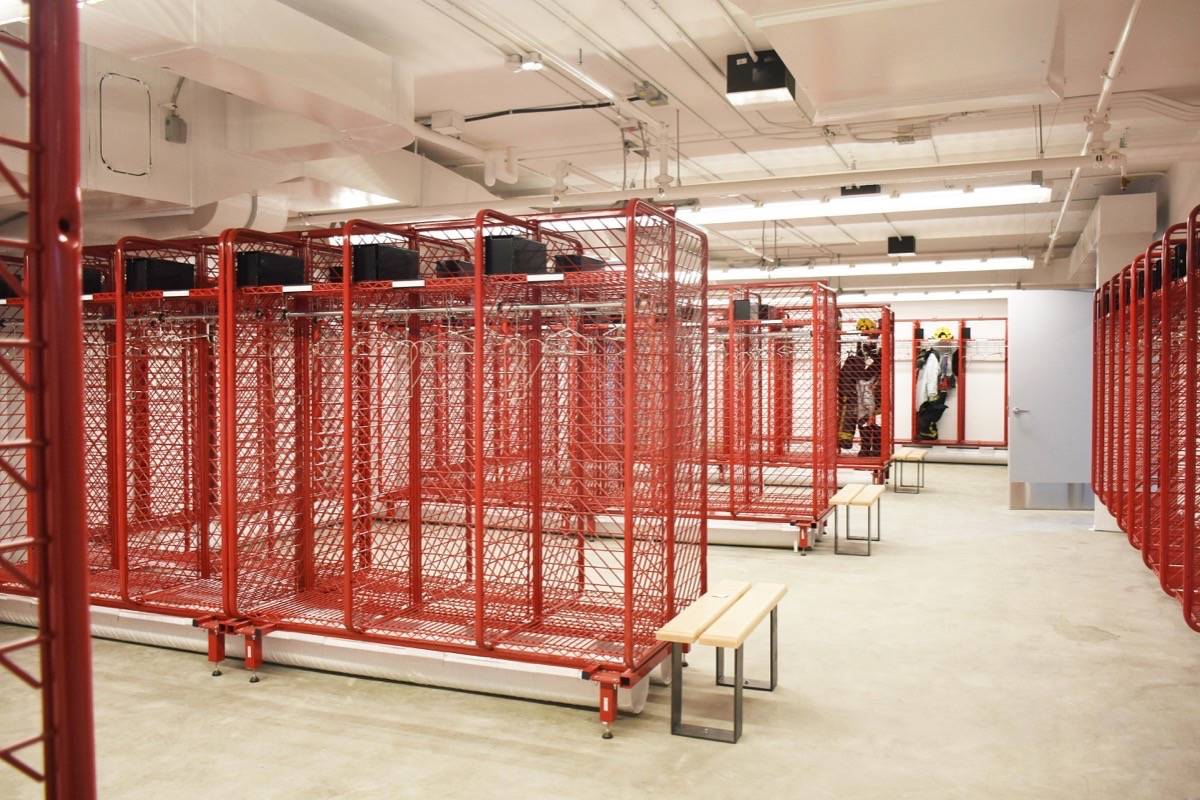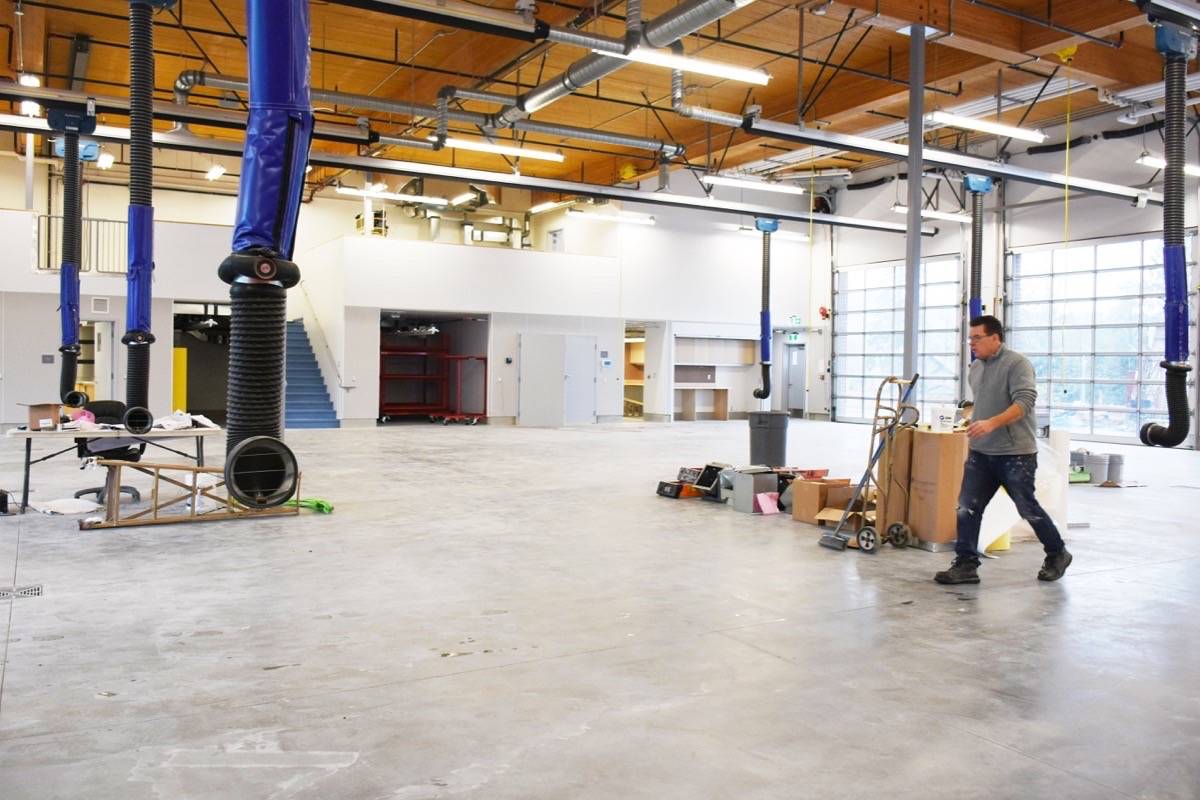A new fire hall in the Albion area is near completion.
Maple Ridge Fire Hall No. 4 will be up and running “imminently” said fire chief Howard Exner, although he declined to give an exact date.
“We have to be able to get to the point that we have substantial completion of the building, and so we’re just waiting for that to happen,” said Exner as he took The News on a tour around the new building.
The new fire hall and training centre is located at 23863 112 Ave., just north of Kanaka Way, on a parcel of land more than four hectares in size.
A promotional video released by the City of Maple Ridge explains that one of those hectares has been dedicated to conservation, while the other three have been shared with the city’s parks, recreation and culture, and information technology departments.
There will be 25 paid-on-call members that will be working from the new building plus two staff with emergency management, and three in the training division. Career members will also work from the building at a later date.
But, Howard noted, it is more than just a fire hall.
READ MORE: Maple Ridge and Pitt Meadows fire halls carry similar price tag
The building itself includes a meeting room that will be available for fire hall staff and for city corporate meetings, there is a gym for staff to work out in, as well as a kitchen, dining room and lounge area.
There is also a corporate server room to hold the city’s computer records.
One of the server rooms used to be in the city tower, said Exner, but that was not an ideal location.
“This one is a purpose-built place for servers,” said Exner, a building that is “post-disaster” designed.
There is a radio room to do paper and computer work, that will also serve as a department operations centre for things like wind storms, heavy snowfalls and ice storms.
READ MORE: Work starting soon on Maple Ridge Fire Hall No. 4
A training room – which can be divided in half – will work as a back-up emergency operations centre in case the operations centre at Hall No.1 is out of action.
Working out of the fire hall will be one engine, one fire engine, a tanker truck and a small rescue truck. The back side of the bay will have two training trucks. There will also be a maintenance bay where a mechanic will have their own space to work on trucks and take them apart.
Outside there is a small training centre.
“This fire hall has been on the books since 1999 and it’s on the books because of the fact that we recognize we have a growing area in the Albion area,” said Exner.
He explained that they needed to have a fire hall closer to where the calls were coming in.
“It’s going to shorten the response time,” said Exner.
Currently, he explained, a lot of the paid-on-call firefighters live in the Albion area. Usually when they respond to calls, they have to drive all the way to Fire Hall No. 2, by Whonnock Lake Park, and then get on a truck to respond back to the Albion area, or to the downtown core.
Now, Exner said, they will be able to drive a short distance, get on a truck and respond to a call in the immediate area or in Whonnock.
The training facility, he said, will allow firefighters to train in town instead of driving to the Justice Institute, at the north end of 256 Street.
Here they have an outdoor classroom, instead of taking off all their gear to go inside.
A big grey building with red rails is a training prop that was designed to represent as many different types of structures that firefighters can face when attending a scene. The front side of the building mimics two different types of residential areas and on the top of the structure there are two different types of roofs – a peaked roof and a flat roof.
The windows are typical windows one would find in apartments or houses. On the south side of the building there is a mock up of a vehicle garage and an apartment front lobby area. There are also different types of stairwells that firefighters can encounter when battling a blaze.
“We tried to make this building do a whole bunch of things so that we can train different ways,” said Exner.
At the back of the training centre is a band-shell that sits on underground tanks containing about 20,000 gallons of water. Beside it there is a blue hydrant and a red hydrant. The red hydrant runs on municipal water supply. The blue hydrant is a dry hydrant that draws water out of the 20,000 gallon tanks. Here firefighters can practice doing drafting with their firetrucks, along with doing maintenance and testing of the vehicles.
The band-shell is used to shoot water at where the water goes back down into the tanks to be recycled.
There are three different types of pads at the centre – two are cement and the other is dirt – that allow firefighters to dig up the ground to practise fighting fires on uneven land.
Every effort was made when designing the building to keep noise and light pollution to a minimum.
The fire hall was built sunken into the property and berms were used to deflect noise upwards instead of outwards. Trucks responding to calls exit south onto Kanaka Way into a gully area, “so immediately lights and sirens won’t be much of a problem for people,” said Exner. The building itself, he added, shields noise from the training centre.
cflanagan@mapleridgenews.com
Like us on Facebook and follow us on Twitter



